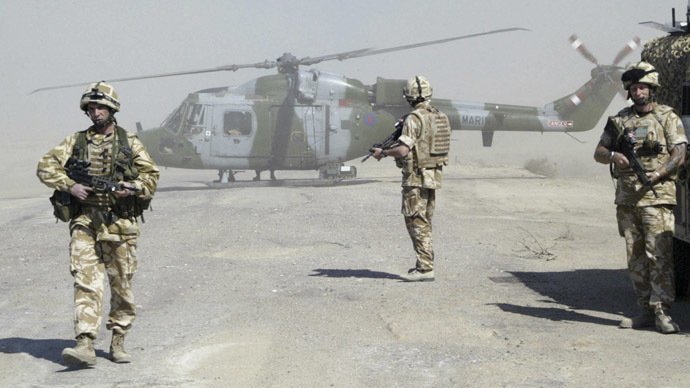Army Reserve recruiting targets ‘unachievable’ – watchdog

Army reservist recruiting targets, which had been upped to account for cuts to the regular military, are ‘unachievable’ despite an expensive recruiting drive by the Ministry of Defence (MoD), according to the Major Projects Authority (MPA).
In its latest annual report, the MPA – which was set up by the Conservative/Liberal Democrat Coalition to monitor large projects – said recruiting goals were simply not “achievable.”
However, MoD figures say despite failing to raise reserve numbers to the intended 30,000 strength, the military has exceeded targets that had been set.
READ MORE: Military chiefs secretly lobby Osborne to protest defense cuts
Reserves Minister Julian Brazier said that between January 2014 and March 2015, just over 8,000 people had joined the Army, Navy and Air Force reserves as a whole.
“We knew that changes to our reserve forces would not happen overnight, but we are turning a corner and making real progress,” Brazier told the BBC.
“A combination of unblocking the enlistment pipeline and improved marketing has delivered real improvements.”
The project was given a ‘red’ rating by the authority, which denotes a scheme in which “successful delivery ... appears to be unachievable.”
The rating means that a project has major issues with “definition, schedule, budget, quality and/or benefits delivery, which at this stage do not appear to be manageable or resolvable.”
Increased reliance on reserves is one symptom of defense austerity, according to critics, while the military has also seen some of its budget integrated with foreign aid.
On Friday, it was revealed the MoD had spent £7,000 (US$11,000) on painting a school in Kenya.
The school is situated in the small town of Archer’s Post, in the Samburu region, near the site of a major MoD firing range.
READ MORE: Cameron vows not to cut army down to 60,000
The unusual expenditure is said to have come about as a result of Chancellor George Osborne’s instruction that the military put millions of pounds into development-type projects in order that the UK can hit its annual aid targets.
Defense spending became a major topic of contention both in the run up to the general election last month and continues to inform considerable lobbying and in-fighting by senior political and military figures.
In June it was revealed defense chiefs had secretly lobbied the Chancellor at a breakfast meeting following his announcement of a further £1 billion ($1.57 billion) in cuts to the military.
The Chief of the Defence Staff and the heads of the Army, Navy and Air Force are alleged to have said: “If you want us to do the job, you need to give us the firepower.”












